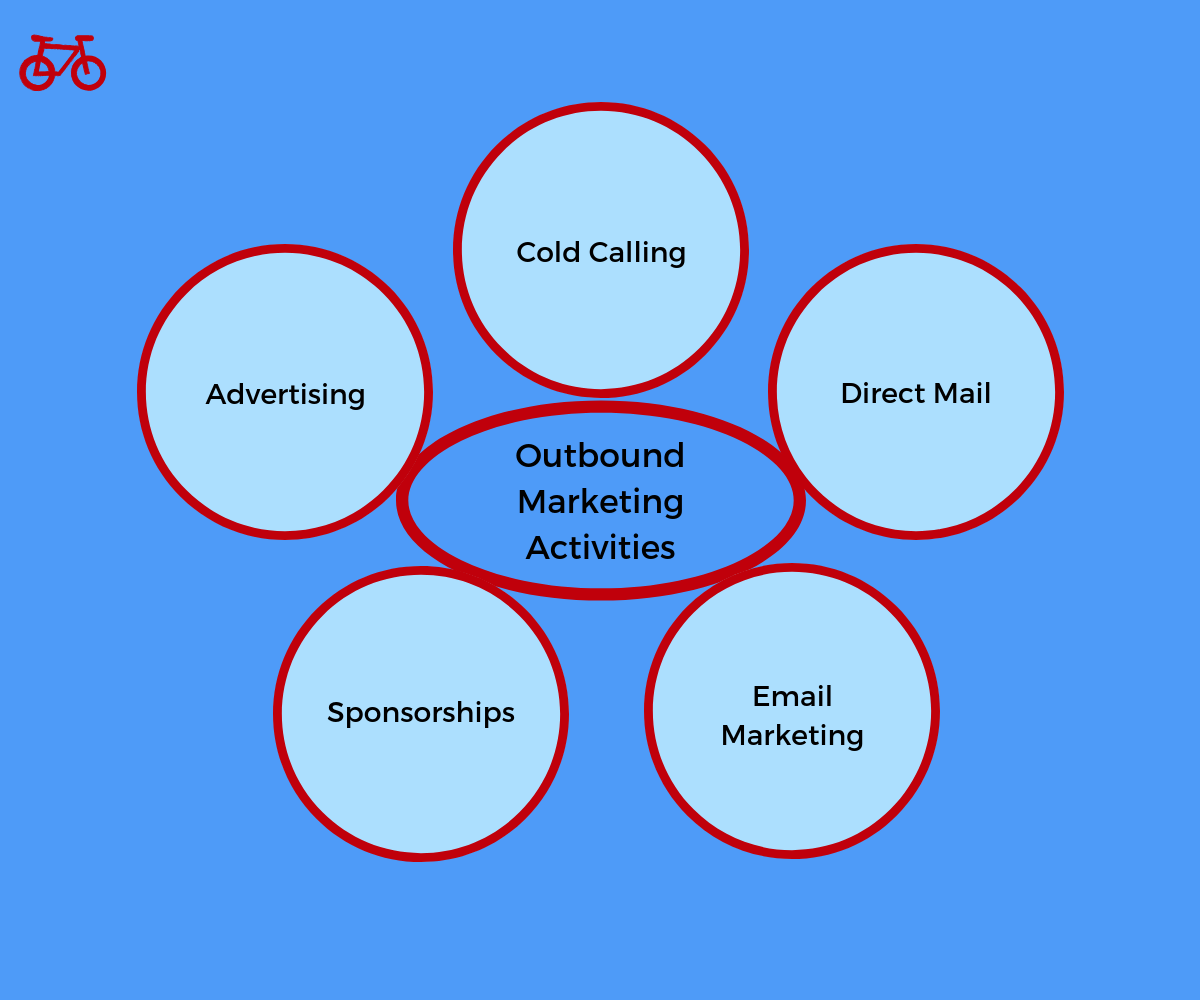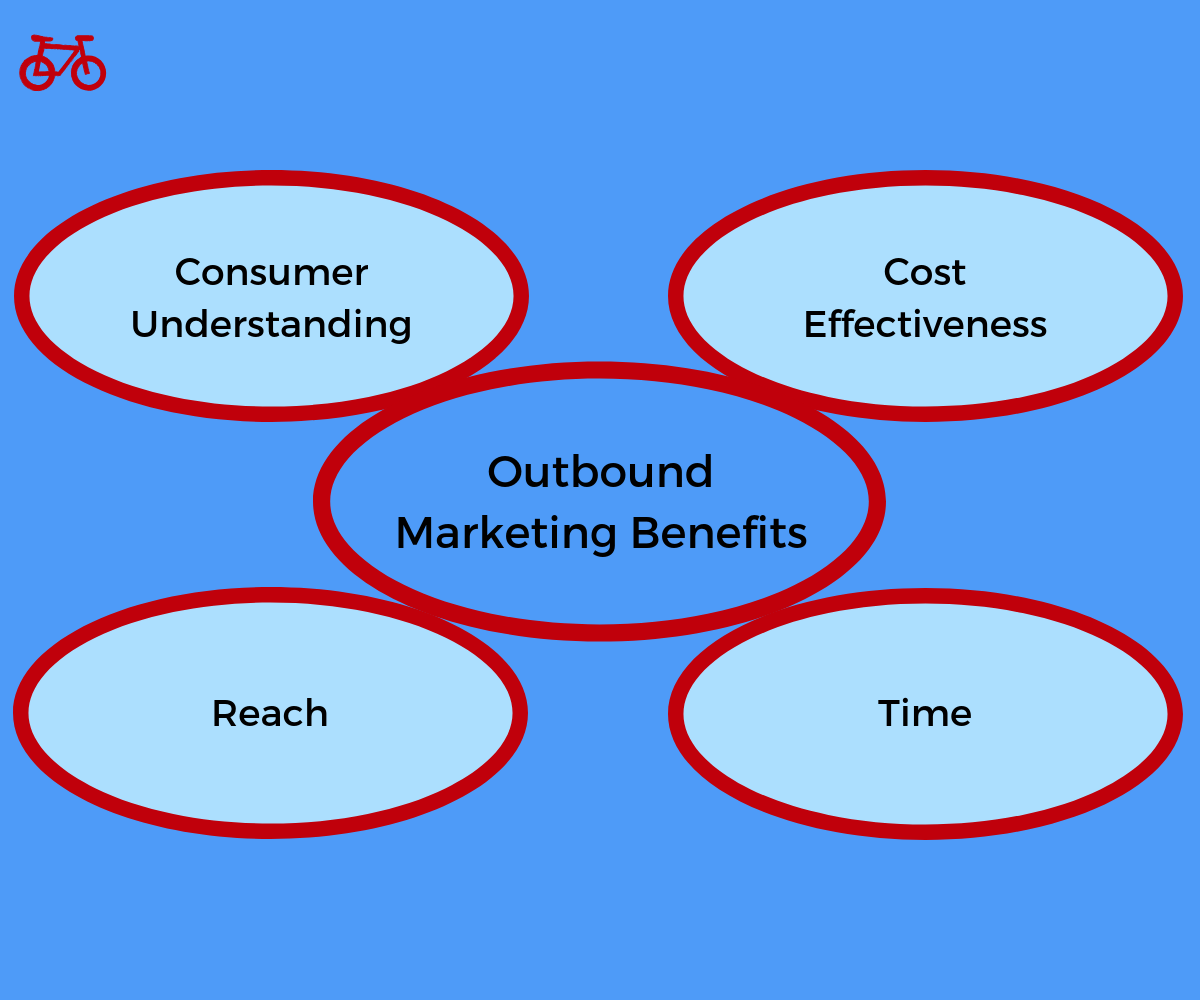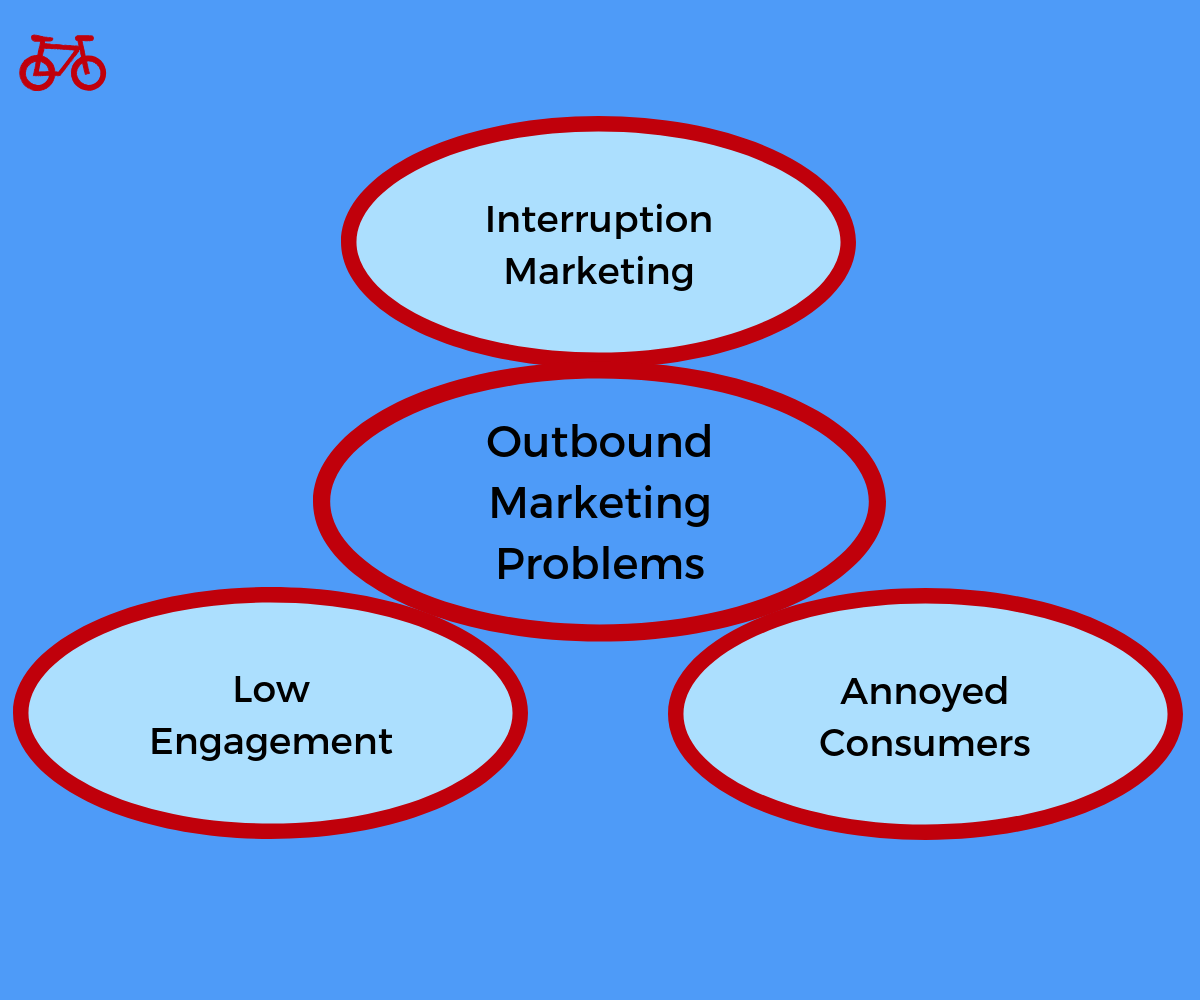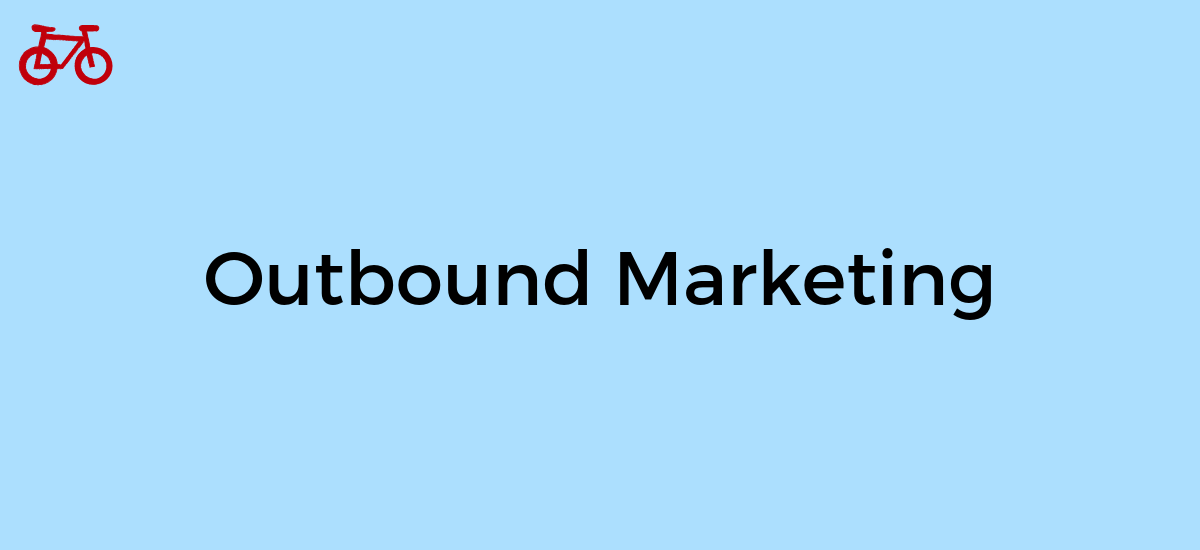Television Ads. A mailbox full of credit card offers. A handler walking up to you in the middle of a tourist destination.
All of these are interruptions a company, or even individual, is making in order to make you aware of their product. The company is pushing their message in front of you. Ultimately, to make you aware and realize you need their product.
This is outbound marketing. Here, we will discuss an overview of and whether it can be right for your business.
Before we get started, let’s have a small disclaimer. Although the examples above seem annoying as a consumer, they are effective. And yes, these tactics do get a lot of negative press. But, they do have a place in the marketing mix and in our marketing strategy.
So, let’s discuss outbound marketing.
What is Outbound Marketing?
Outbound marketing is a marketing strategy where a company is pushing their marketing message in front of an audience. This can be a blanket message to a broad audience. Or, a more targeted message to a relatively segmented audience. It is typically a message that interrupts what the consumer was previously doing to inform them about the product.
Think about television ads for context.
It can often be referred to as push marketing. Or, it can be viewed as interruption marketing.
This is a common marketing approach and is often looked at as “traditional marketing”. It’s a strategy that continues to dominate most marketing budgets. Its effectiveness depends on your business, consumers, and your customers buying process.
Outbound Marketing Activities
As outbound marketing is mostly considered the traditional form of marketing, activities that make up outbound marketing can largely be the most common activities you think about as “marketing activities”. Things like television ads and direct mail campaigns.
These are common marketing activities, which a majority of companies participate in. The following are a few of the most common outbound marketing activities.

Advertising
Outbound marketing advertising is using the ads that interrupt us. That may sound negative, but it is just what they are.
These are the advertisements during television shows, on the radio, in newspapers and magazines, and even billboards.
Outbound marketing advertisements are the ads that we see when we were not seeking out the particular company’s product.
Cold Calling
Cold calling is a tactic, which is usually associated with sales. But, this also includes the marketing cold calling tactic of telemarketing.
Cold calling and telemarketing are the act of calling prospective consumers on the phone when they are not expecting to hear from you. This is an aggressive outbound marketing initiative.
Direct Mail
Direct mail is a common marketing tactic. Particularly for consumer goods and credit cards. Direct mail is all the mail that comes to our mailboxes from companies. It is commonly referred to as “junk mail”.
Sponsorships
Sponsorships encompass the marketing activity or sponsoring trade shows, events, stadiums, or any other paid contribution a company makes to something that is not necessarily advertising.
Companies commonly employ sponsoring for brand awareness and branding campaigns. It is a tactic that has a lot of reach.
Email Marketing
Email marketing is another common tactic. Although open rates and click rates are not as effective as they once were, it continues to generate positive ROI.
Email marketing can be an outbound marketing tactic and an inbound marketing tactic. It ultimately depends on whether there is an explicit opt-in from the email recipient.
Looking at some of the various outbound activities, it is easy to see how this continues to dominate marketing budgets. They are common activities. They are effective. And, consumers have come to understand them as part of the buying process.
Outbound Marketing Benefits
Outbound marketing has its benefits. Which is why so many companies use the activities. Whether it is the time frame to see an ROI on a marketing campaign or how your customers purchase, the benefits can make it an attractive strategy.
The following are some of the benefits of outbound marketing.

Consumer Understanding
Seeing as outbound marketing tactics have been the predominant marketing method, and is often considered “traditional marketing”, it makes sense that consumers are comfortable with it. Thus, the comfort level of consumers is a benefit.
Why?
If this is how consumers are used to purchasing, it makes sense to match their buying behavior with marketing tactics. Thus, outbound marketing can have an advantage in how consumers expect to be marketed to.
Cost Effectiveness
A primary driver of a company deciding to use an outbound marketing strategy is cost. It is an extremely cost-effective way to generate awareness, leads, and interest.
As most campaigns are not asking for permission from consumers for the outreach, a campaign gets access to more prospects. Which ultimately lowers the cost of the campaign.
Reach
Mass marketing participates in outbound marketing activities because it is generally the way to generate the largest amount of reach. And, it ultimately becomes the only way to generate the volume needed for some companies within a specific time period that performance is expected.
Thus, a company will need to employ outbound marketing strategies to reach their business goals.
Time
The time frame needed to launch an outbound marketing campaign and begin seeing results is relatively short. It is not necessary to see critical mass build. Thus, it can be a great, and necessary, shot-term strategy.
The benefits make it a necessary strategy in most marketing departments. It is cost effective, consumers understand the strategy, and it generates results in a short period.
But, the strategy is not without its problems.
Outbound Marketing Problems
Outbound marketing has plenty of critics. Its critics are consumers who dislike being interrupted. Marketers who feel it is a cheap, or a dirty strategy, and many others.
The critics obviously have a valid point. And these are the clear problems outbound marketing faces. But, there is not one perfect strategy. Thus, we need to acknowledge the problems and let those guide our strategic decisions.
The following are some problems.

Interruption Marketing
One the largest criticisms is interrupting consumers. Thus, it earns itself the name “interruption marketing”.
And yes, it interrupts consumers. And in the course of launching outbound campaigns, we can sometimes interrupt consumers too far.
So, we have to be conscious of the interruption and take steps to try and mitigate its negative effects.
Low Engagement
Seeing as we do not ask for permission or an opt-in to our communication with outbound marketing, engagement tends to be quite low. This can be a problem if an audience is not large enough. Also, it means that we may have poor measurements on the effectiveness of our messages.
Thus, low engagement can cause a lot of unwanted issues.
Annoyed Consumers
Ultimately, consumers and our customers can become annoyed by our interruption techniques. This is a constant battle and one to be sensitive towards. It should be a concern and it should guide our marketing activities.
The benefits and problems should both be considered when deciding whether to use outbound marketing as a strategy. Like most business decisions, it depends on your business goals, objectives, audience, and resources. After considering this, you can make strategic decisions.
Outbound Marketing vs. Inbound Marketing
After understanding outbound marketing and considering all the pros and cons, we should look at alternative marketing strategies. Often, it’s compared to inbound marketing. Which, is a new marketing strategy, which has its foundation in pull marketing.
When outbound marketing receives criticism, it is usually referenced that inbound marketing is a better, less intrusive strategy. Ultimately, it is.
But, as we saw with the benefits, it has its place. So, if we compare the two strategies, one might be better for your business than the other. It also might mean that the two strategies need to be used in conjunction. You can pull customers to your brand and push your marketing message in front of your target audience.
Thus, if we look at outbound marketing vs. inbound marketing, one might be better in certain situations. But like everything, the answer to a comparison like this is, it depends.
Is Outbound Marketing Dead?
Hardly.
Nothing is ever dead. Effectiveness might not be what it once was, but that’s ok.
Outbound marketing is still a valid strategy. It can, and probably should, be used in conjunction with other marketing strategies and tactics, like inbound marketing. Whether to use this strategy or another is not an all or nothing conversation. It depends on your business and your marketing goals.
Thus, it is not dead. Nor should it be looked down upon as a lesser marketing strategy. Use it as it fits your business and buyers.
Always keep in mind that we want to build a sustainable business and loyal customers. Let that guide your marketing strategy, and outbound marketing is just fine.
